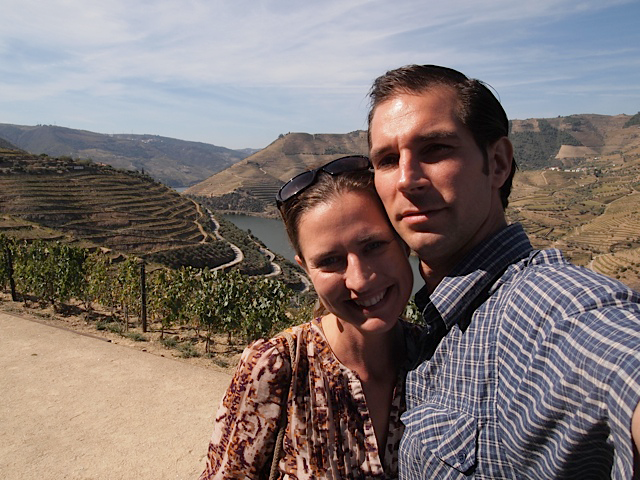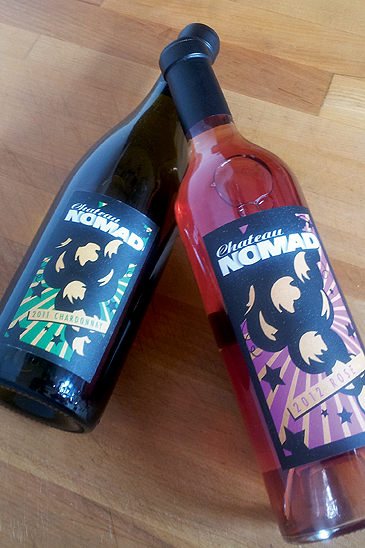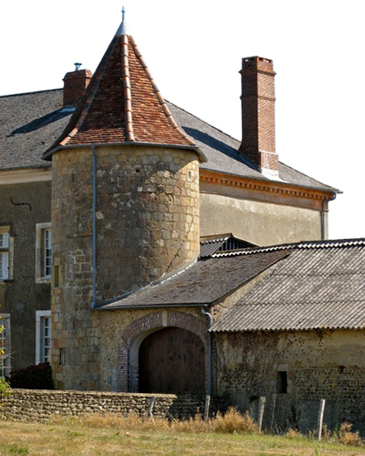These Chicagoans Are Making Wine you Should Be Drinking
By John Lenart in Food on Feb 24, 2015 8:00PM

Michael Kush and Jennifer Kingen Kush of Chasing Harvest (Photo courtesy of Michael Kush)
One of the things I love about wine is connecting wines with the people who make them and the places they're made. But because we're in Chicago, those people and places are far away. So it's hard to make that connection. When discussing why wine isn't as prominent as beer or cocktails in Chicago, I often say that you can go to any number of high quality local breweries, and even distilleries, to talk with the people who make the product right here in Chicago. But when it comes to wine, it's made in far off places by people who only occasionally come to town.
But wait! There are actually people who live in Chicago who do make wine. Now, they're neither sourcing their fruit here, nor are they making their wines here, but they do actually live here.
Here's a look at three labels made by people who live right here in the Chicago area.
Chasing Harvest - Michael Kush, a native Chicagoan and Jennifer Kingen Kush, from Racine, met at Purdue University, where they discovered their love of wine, as well as one another. In 2006, shortly after graduating, Mike accepted a job as production assistant at Alderbrook in Sonoma. Craving more experience, Mike and Jenn were encouraged by friends to travel between the northern and southern hemispheres to make wine. This way, they could participate in two vintages per year. This practice is called “chasing harvest.”
23 vintages later Chasing Harvest has made wine in Germany, France, South Africa, California, Italy, Argentina, Portugal, and New Zealand. Chasing Harvest is currently focusing production on Portugal and New Zealand.
When I asked Mike why he and Jenn have settled into these two places after chasing harvests around the globe, he explains that, “I couldn't think of two places more opposite to make wine. The climates, traditions and wines are so different.” In fact, just a few days after our interview Mike and Jenn are headed to New Zealand for the harvest. This year they'll be producing about 200 cases of Central Otago pinot noir and about 50 cases of riesling. This is their eighth vintage in New Zealand. Mike loves the fact that these wines are varietal driven and they work with a number of quality growers in the region.
After getting their wines in New Zealand into barrels, Mike and Jenn will return to their Andersonville home for a short stint before heading off to Portugal for the harvest. Now, when you talk to Mike you can hear the passion in his voice when he discusses wines from Douro. He calls it, “The most exciting wine region in Europe.” More specifically, Mike refers to the area where he is sourcing his fruit as, “The Vosne Romanee of Douro.”
This year the couple expects to produce 200 cases of Vinho Tinto, which is a field blend. Unlike the neatly manicured rows of pinot noir in Burgundy or cabernet sauvignon in Napa, in Duoro it's not uncommon for different grape varieties to be planted right next to one another. A field blend is when these grapes are all harvested and vinified together, so the wine is really blended in the field. The red field blend of the Chasing Harvest Vinho Tinto is comprised of the traditional Portuguese grapes touriga nacional, tinta roriz and touriga francessa, from vines reaching 100 years old. They'll also be making about 50 cases of a white field blend called Vinho Branco from “vinha velha” or old vine white grape varieties.
All of the Chasing Harvest wines are made with minimal intervention and really delicious. I had the chance to taste the 2010 Otago pinot noir, as well as the 2010 Vinho Tinto and the 2012 Vinho Branco. All are very tasty, quality wines that I enjoy and recommend.
You can find Chasing Harvest wines at In Fine Spirits and other fine wine shops around Chicago.
Chateau de Gayon - When Wicker Park architect Dave Ebert decided to follow his passion for agriculture, the prospect of growing commodity crops in the mid-west just didn't appeal to him. While on a bike trip in the Madiran appellation in the south of France, near the Pyrenees Mountains, Ebert tells me, “I quickly got hooked on the countryside.” So he decided to search for a small property there where he might have a small vineyard to grow grapes and perhaps sell the harvest to the local wine cooperative. After returning a second, and then a third, time he spotted a listing for a chateau.
What he found at Chateau de Gayon wasn't quite the small quaint property he had hoped for, but Ebert explains that “It just clicked.” A year later he owned it. With plans to make a small bit of wine and sell the rest of the grapes grown at his chateau, Ebert converted an old barn into his winery. He took a few wine making courses and had the help of a Swiss vigneron (French for winemaker) to set up his chai (winery). At the same time, he was unable to reach a satisfactory agreement with the co-op for his grapes so he simply increased the capacity of the chai.
Chateau de Gayon produces four wines, two big reds, which are tannat-based and 2 demi-sec whites.
The Chateau de Gayon Madiran dou Barrinquet is a blend of 70% tannat, a gigantic red, blended with 20% of a field blend of cabernet sauvignon and cabernet franc, and 10% fer servadou. 600 Cases are made each year. The other red is the Madiran dou Hauret, which is 60% tannat, 30% of a field blend of cabernet sauvignon and cabernet franc and 10% fer servadou. 1000 cases are made per year. This blend is slightly less tannic than the dou Barrinquet. In both wines the tannat is aged in oak barrels for a year. The rest of the grapes are un-oaked. Both wines are perfect for matching with the hearty cuisine typical of the area.
While I enjoyed the reds, what really blew me away was the demi-sec white wines of Chateau de Gayon. This surprised me because I'm not typically one who enjoys off-dry wine. The Pacherenc du vic-Bilh Gouettes de Soleil (430 cases) is made from gros manseng, which expresses pear and honey notes. The Pacherenc du vic-Bilh Gouttes d'Or (165 cases) is made from petit manseng, and is slightly more wild and earthy with citrus and mead characteristics. This wine blew me away. Both whites are de-stemmed before fermentation in stainless steel.
When asked if his wines were typical expressions of wines from this lesser known region, Ebert proudly said, “No. My wines are much better. I take much better care of my fruit and my wine making than is typical.” The estate is closer to the Pyrenees than the rest of the Madiran appellation, which results in higher altitude, and a longer growing season.
You can buy Chateau de Gayon wines at The Nobel Grape.

Photo courtesy of Lush Wine and Spirits
Partnering with his friend, winemaker Scott Klann of Newsome-Harlow in the Sierra Foothills, Einhorn set out to make, “A burgundian style chardonnay, some sort of Rhone wine, a Bordelaise blend, as well as a rosé. So I started with the plan of making four very small lots of wine, less than 100 cases of each.”
Einhorn began mailing bottles of wine to Klann that expressed characteristics he liked and they started talking about how to make wines that had those same characteristics. They contracted fruit from some of California's greatest wine growing regions.
Unhappy with their early efforts, Einhorn kept striving to find better fruit to make the wine he set out to make. He traveled to Europe and started looking at the geography of the areas growing the grapes for the wines he loved, and then looked for those same traits in California. Eventually, he was led to the Santa Cruz Mountains, where he found fruit at a very small, six acre vineyard for his 2013 chardonnay.
When you talk with Einhorn, you feel his drive. He's always looking to improve on what came before to make his dream wines.
Einhorn added one more wine to the original four he set out to make. A funky wine, made from a little known grape, grown only in a few vineyards in California, trousseau gris. He was able to source some of the fruit from a farmer on a handshake deal.
This year, Einhorn will produce 100 cases of trousseau gris called "Alemamni", 80 cases of the "Alani", a Bordelaise blend, 80 cases of the "Gitan", a Rhone blend, 100 cases of the rosé, and 100 cases of the chardonnay.
I tasted the trousseau gris “Alemanni”, the Bordelaise blend “Alani”, and the Rhone blend “Gitan.”
The trousseau gris is really intriguing and a bit funky. High in acidity, this wine is a fantastic food wine and can go with a variety of dishes. It's by no means an orange wine, but has some of those characteristics.
The 2011 Rhone blend “Gitan” is 69% syrah and 31% mouvedre. This wine has a pretty blueish color with big black pepper notes, but still has good red fruit flavors. Another good food wine, but one that can be drunk on its own.
When it comes to the Bordelaise blend “Alani”, Einhorn was more attracted to lesser used varietals petit verdot and malbec. The 2011 “Alani” is a 50/50 blend of each. The petit verdot lends a nice backbone and complexity to the malbec, while the malbec balances out the often overly tannic petit verdot.
The fruit for both the “Gitan and “Alani” are sourced from Calaveras County.
Oh, and all the unusual names of the wines? Well they're the names of various nomadic tribes that roamed the modern wine growing areas of France.
Chateau Nomad wines are available exclusively at Lush Wine and Spirits.
All of the wines in this article cost between $18 and $35 per bottle. So there you have it. A connection between you and a couple of “local” wine makers. Check them out, they're all very good and quite interesting, at good value prices to boot.
